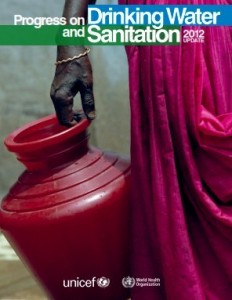3月22日「世界水日2012」 农村食水及衞生亟需关注 妇女及女童受害最深
2012-03-22
纽约/香港,2012年3月22日——联合国儿童基金会(UNICEF)在今日「世界水日」,唿吁各国政府需分外关注並未受惠于国家及经济发展的农村人口,他们不少至今仍未取得安全食水及得到基本公共衞生设施。並指出食水短缺带来种种问题,而妇女及女童往往是受害最深的一群。
「各国政府必应确保社会资源分配均衡,令最贫困人口都能分享到国家发展成果。」UNICEF供水、公共及个人衞生项目主任Sanjay Wijesekera表示:「否则,各地政府将会承受大量国民,尤其是儿童,面对疾染不堪一撃的风险。」

UNICEF及世界衞生组织于两周前共同发表的《2012年饮用水和衞生设施进展》指出,截至2010年底,全球89%的人口,即61亿人使用经改善的饮用水源,成功实践了「千禧发展目标(Millennium Development Goal)」。不过,却出现了全球性的城市与农村安全饮用水人口不均的问题——未能获得安全饮用水的农村人口足较居住在城市的多出好几倍。
2010年,全球约有7.8亿人缺乏经改善的饮用水源,当中多达超过8成(即6.5亿人)属农村人口。公共衞生方面更是差强人意,环顾全球,可使用经改善的公共衞生设施的城市人口比率达79%,但农村的却只得47%。换言之,未能使用经改善公共衞生设施的人口中,多达72%是居住在农村地区的人口,亦即18亿人。
UNICEF更发现,在贫穷国家出现的安全饮用水不均问题,情况更为严峻。以撒哈拉以南的非洲地区为例,城市与乡村在获取安全饮用水的比率差距高达34%。而在发展最缓慢的国家中,平均而言,每100名农村人口,只得3人住所备有供水设施。
UNICEF坦言,食水短缺带来种种问题,妇女及女童往往是最受影响的一群。在25个撒哈拉以南非洲国家进行的调查发现,71%缺乏供水设施的家庭,均由家中母亲和女孩负起挑水的重担。每个家庭,每日最少要为取水远走一趟,若要取得足够一日所需的水量,她们甚至要来回奔走几遍。粗略估计,全球妇女每天合共花上至少1,600万小时担水,男人则花上600万小时,即使是年幼的儿童亦花达400万小时。
「每一个人,都应该获得安全食水。」Wijesekera先生表示:「我们无法满足于目前成果,除非有一天,我们看到最难接触的一群,他们只要扭开水龙头,或到水井或水泵,轻松便取得足够一日所需的安全食水。」
![On 5 August, Kurfa Wario draws water from a collection tank in the ground, in Melbana Village, Mio District, in the drought-affected Borena Zone. The collection tank has just been filled by a tanker truck delivering emergency water supplies. Water delivery is supported by the Borena Zone Emergency Water Taskforce, of which UNICEF is a member. [#6 IN SEQUENCE OF NINE] In late August 2011, the crisis in the Horn of Africa affecting primarily Kenya, Somalia, Ethiopia and Djibouti continued, with a worsening drought, rising food prices and ongoing conflict in Somalia. The regions worst drought in 60 years has left 12.4 million people in need of assistance, including 4.8 million in Ethiopia. The Government of Ethiopia estimates that 150,000 children under age five will require treatment for severe acute malnutrition, a deadly condition, by the years end. In addition, over 76,000 refugees from Somalia which faces one of the worlds severest food security crises have entered Ethiopia, with a further 200 to 300 arriving every week. Many refugees are dangerously malnourished, and death rates among refugee children have reached alarming levels, according to the United Nations High Commissioner for Refugees (UNHCR). Meanwhile, emergency food reserves are dwindling, and outeaks of measles have been reported in refugee camps. UNICEF, together with the Government, United Nations, NGO and community partners, is supporting a range of interventions and essential services, especially for the displaced and for refugees, including feeding programmes, immunization campaigns, health outreach, and access to safe water and to improved sanitation. A joint United Nations appeal for humanitarian assistance for the region requires US $2.4 billion, of which 58 per cent has been received to date. A majority of UNICEFs portion of the appeal has been funded.](/wp-content/uploads/2015/12/20120322_WWD2-300x214.jpg)










